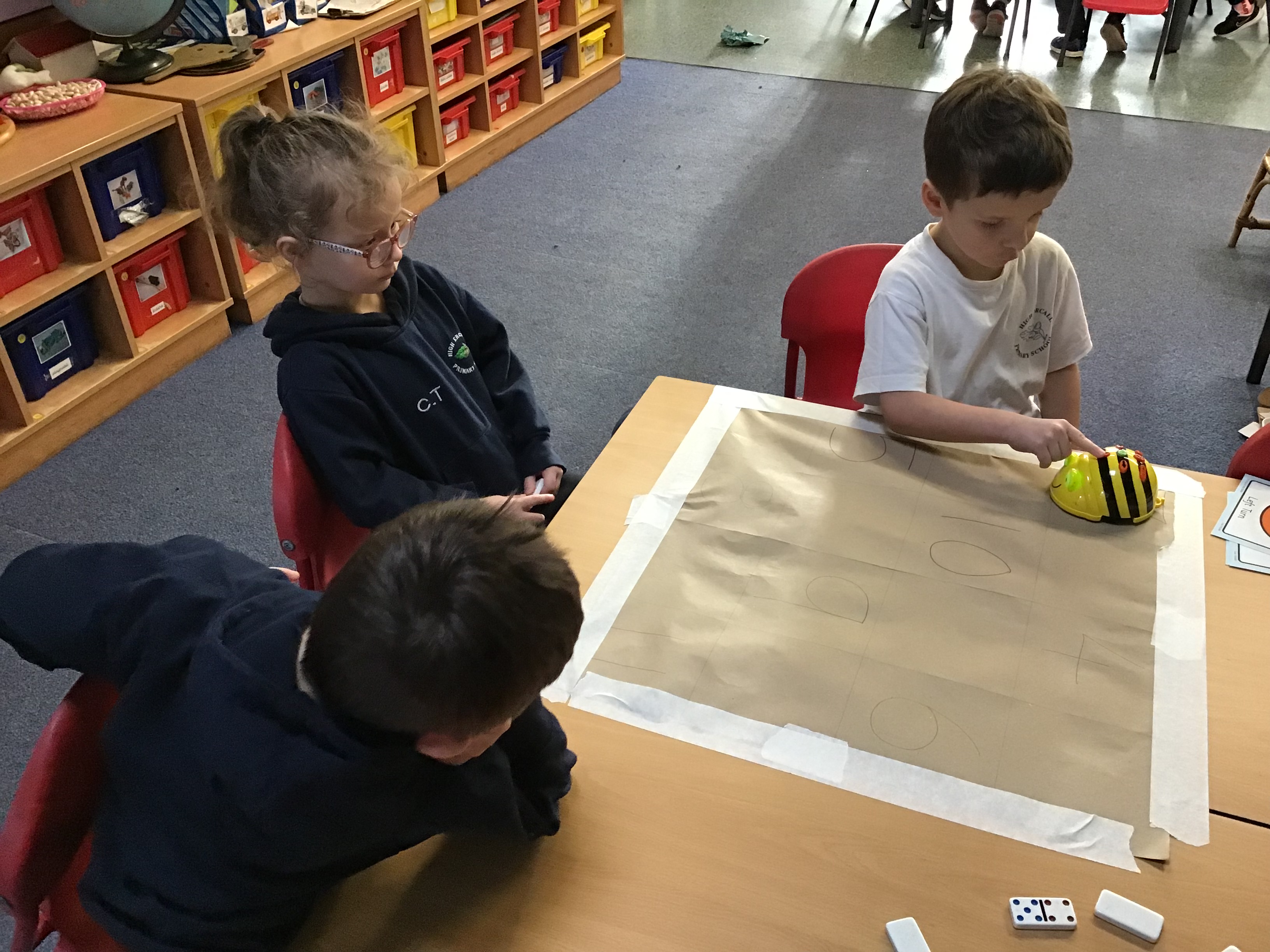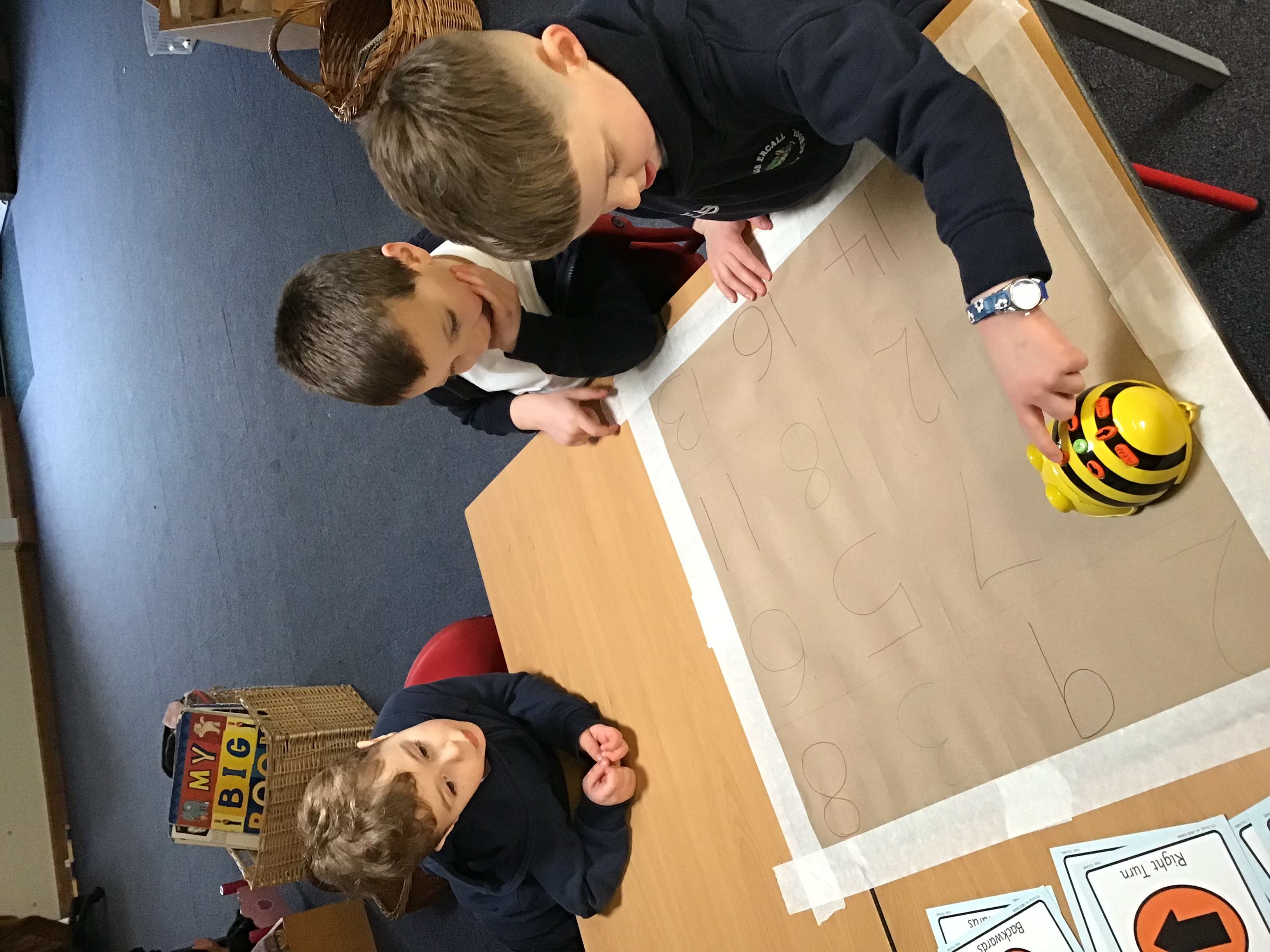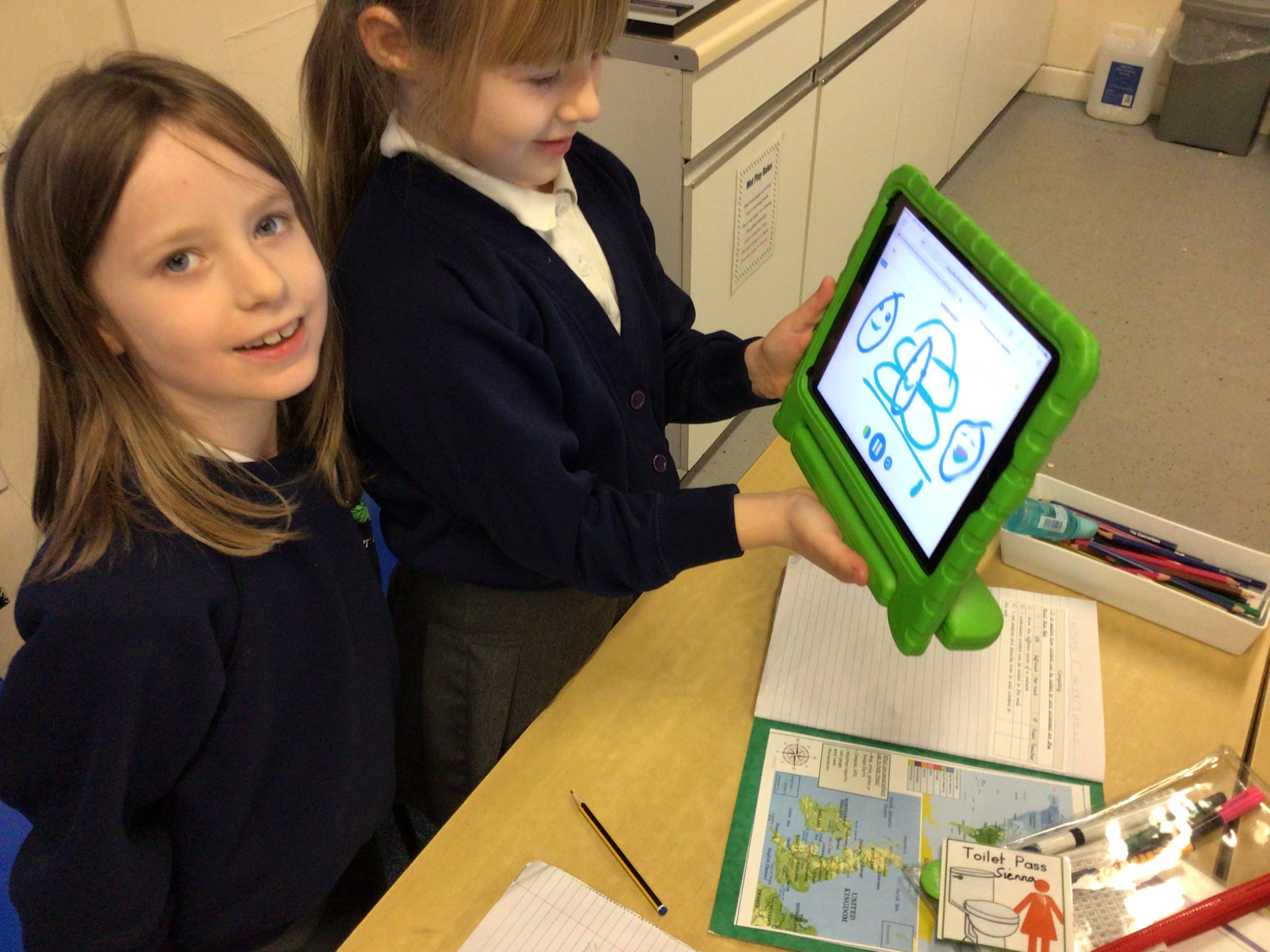Intent
What does Computing look like at High Ercall?
Through teaching computing at High Ercall Primary School, we equip our children with the substantive and disciplinary knowledge needed to participate in a rapidly changing world where work and leisure activities are increasingly transformed by technology. Children will increase their substantive knowledge in computing by developing an understanding of how to safely use technology, how to be computational thinkers and how to program. This will support the development of disciplinary knowledge by allowing children to interpret and apply their substantive knowledge in the creation of original digital content. Computing skills are taught within context, using technology to both create and assist learning in all subject areas. We believe a high-quality computing education equips our pupils to use computational thinking and creativity to understand and change the world. Computing is embedded across our curriculum due to its deep links with mathematics, PSHE, science, and design and technology.
Our curriculum has been built to include our key curriculum drivers:
The children are encouraged to develop our school values (the 5Rs) when studying computing, with a specific focus on resilience as children are encouraged to use a variety of technology throughout their journey at High Ercall. In our curriculum we have considered the journey of a child through the school, so that our curriculum is progressive, building on prior learning, and regularly revisiting taught concepts. Each class has a two-year rolling programme which has been designed specifically to match the needs of our school and the structure of our classes, ensuring all children meet the full programme of study outlined in the National Curriculum. Through a cross curricular approach and diverse range of contexts, children become confident, independent and positive participants in the digital world. Children will understand and know how to use computers in an effective, informed and safe way.
What do we want children to be able to do by the end of Year 6?
We follow the National Curriculum expectations for computing and expect that our pupils will have met or exceeded the expected standards for Year 6 pupils. The computing curriculum is made up of three main strands, which are linked together and are of equal importance:
- Computer Science, the core of computing, in which pupils are taught the principles of information and computation, how digital systems work, and how to put this knowledge to use through programming.
- Information Technology is the application of skills. Pupils are equipped to use information technology to create programs, systems and a range of content.
- Digital Literacy ensures that pupils can use, and express themselves and develop their ideas through, information and communication technology, ready for the future workplace.
By the end of Year 6, children will have developed skills in all three strands of the curriculum, as well as having a secure understanding of E-Safety and how to protect themselves online.
Implementation
How is the curriculum for Computing organised?
To ensure coverage, depth and balance in the computing curriculum, teachers plan in a variety of ways:
- The KS1 and KS2 two-year rolling programme for long term planning contains details of particular units relevant to computing and when they should be taught
- Elements of computing are delivered to the Reception children, through the Early Years Foundation Stage Curriculum (Knowledge & Understanding of the World) and are incorporated into the termly topics.
- Each class will have one discrete lesson per week teaching the fundamentals of computing.
- Further opportunities for use of technology will link to other areas of the curriculum and be encouraged as often as possible/relevant.
- Pupils have access to technology across the curriculum to enhance their learning and are encouraged to use these resources as and when they need them. This includes use of laptops, ipads, cameras and digital recording devices.
- These aspects are taught as and when necessary and are added to individual medium and short term planning at the time
- The progression of skills document is used to inform teachers long-term planning to ensure coverage and a development of skills and knowledge across the three strands.
Long term plan
A 2-year rolling programme for each mixed-age class to ensure coverage and progression is achieved ensuring students are fully prepared for KS3. The long-term plan also details the substantive and disciplinary knowledge to be taught for each topic, with a key enquiry question which the topic is based around. Both substantive and disciplinary concepts are taught using a spiral curriculum, so they are constantly revisited throughout KS1 and KS2.
Our substantive concepts are:
- Computer Science - The technical design. The design of new software, the solution to computing problems and the development of different ways to use technology.
- Information Technology - The technical knowledge. The design, use and understanding of hardware and software; computers and electronic systems for storing and using information.
- Digital Literacy - The technical skills. The ability to use information and communication technologies to find, create, evaluate, and communicate information
Our disciplinary concepts:
- Disciplinary knowledge in computing is the use and interpretation of substantive knowledge in order to develop original digital content and programs.
- The core strands are Computer Navigation, Data and Information, Creating Media, Computing Systems and Networks and Programming.
Medium term plans/knowledge organisers
Details the substantive knowledge and sequence of lessons for each topic.
Substantive concept map
Shows which class and topics have covered our different concepts so teachers can use this document to explicitly teach the range of concepts by building upon prior learning and enable the children to make links between different topics within the computing curriculum.
Progression document
Details the progression of skills and knowledge we expect the children to make through their time at High Ercall. The progression document details progression from EYFS all the way through to Year 6.
Vocabulary document
Outlines general computing vocabulary and specific vocabulary relating to all topics. This will be highlighted to the children at the beginning of lessons through mind maps and revisited through subsequent learning and knowledge quizzes.
Fiction and non-fiction book maps
A document that details a range of books that are topic specific to be used to support lessons and in the class book area. Stories will be used throughout school, in order to embed concepts and to provide children with an understanding of the past.
How do we teach Computing?
A variety of methods are to be employed in the teaching of computing, which will afford pupils access to a range of resources and ensure that they are encouraged to develop their potential to the full.
Teachers utilise many differing techniques and approaches to ensure that the computing curriculum is interesting, interactive and alive. Teachers ensure progression of knowledge and skills in their long-term planning which builds on children’s prior knowledge. They develop a sequence of lessons to engage learners and develop their digital literacy alongside the fundamental skills needed for life in the digital world.
We recognise discussion and debate as a key aspect of effective learning and embrace the principles described by ‘Blooms Taxonomy’. Using this structure, it is possible to offer sufficient challenge for children, encouraging higher order thinking skills.
These may include:
- Knowledge given by the teacher
- Use of retrieval questions which are regularly revisited to support children to know more and remember more
- Creative activities – building webpages, blogging, using control devices
- Application of skills to problem solve
- Use of video and films
- Using outside speakers
- Visits to places of relevance to the topic
- Use of relevant books, pamphlets, leaflets, maps, postcards, atlases etc.
EYFS:
Our curriculum is organised so children in reception meet the aims of EYFS framework. The early learning goals are taken from Understanding our world and are as follows:
- Be confident to try new activities and show independence, resilience and perseverance in the face of challenge.
- Explain the reasons for rules, know right from wrong and try to behave accordingly.
- Safely use and explore a variety of materials, tools and techniques, experimenting with colour, design, texture, form and function.
How do we support our SEND learners?
We believe that all learners should primarily access the first quality teach and be immersed in class discussions during computing lessons. Therefore, SEND learners access the same learning as all other children but will be given further support, adapted outcomes and a tailored approach to suit each individual’s needs. Strategies used to support our SEND learners include:
- A pre-teach of topic specific vocabulary as an additionality task
- A reader to support when using fine motor skills
- Mixed ability group/pairs
- More time allocated to process information or instructions broken down into manageable chunks.
This is monitored by our SENDCO - Sarah Roberts - and parents are fully engaged and involved.
Impact
How do we review learning in Computing?
We assess children’s work in computing by making informal judgements and giving verbal feedback as we observe them during lessons. Teachers use mind maps and quizzes to assess understanding each lesson and build a picture of each unit of work in computing, enabling them to see progress in skills and vocabulary. An assessment is recorded in the pupils’ end of year report. Learning is reviewed through pupil conferencing and feedback to staff. Governors, senior management, the subject lead and class teachers are responsible and play a role in measuring the impact of Computing at High Ercall.
What do children say about computing at High Ercall?
When asked about computing, some children's responses include:
"I love using Scratch in Computer Club. Key Stage 2 children help me to learn new things." - Year 1 pupil.
"I enjoyed learning how to use Microbits, I learnt how to display my name in lights." - Year 5 pupil.
Children are able to talk about keeping safe online and can share a range of ways they can use the internet safely and know how to see help from adults.
How do we review and assess learning in computing?
We assess children’s work in computing by making informal judgements as we observe them during lessons, using a mind map at the beginning of a lesson to recap prior learning and with the use of ‘quick quizzes’ for assessment of fact retrieval. We mark a piece of work once it has been completed and we comment, as necessary. An assessment is recorded in the pupils’ end of year report. Formative assessments are made against statutory end of key stage objectives.
Monitoring and evaluation could include:
- A review of learning in books and electronic work saved on to SeeSaw and Sharepoint
- Lesson observations
- Evaluation of the impact of staff professional development
- A review of medium-term planning
- Talking to pupils and parents about learning in computing
- Governor review trails to evaluate the impact of the curriculum - this could be reviewing the website or the curriculum offer, talking to staff and pupils.



